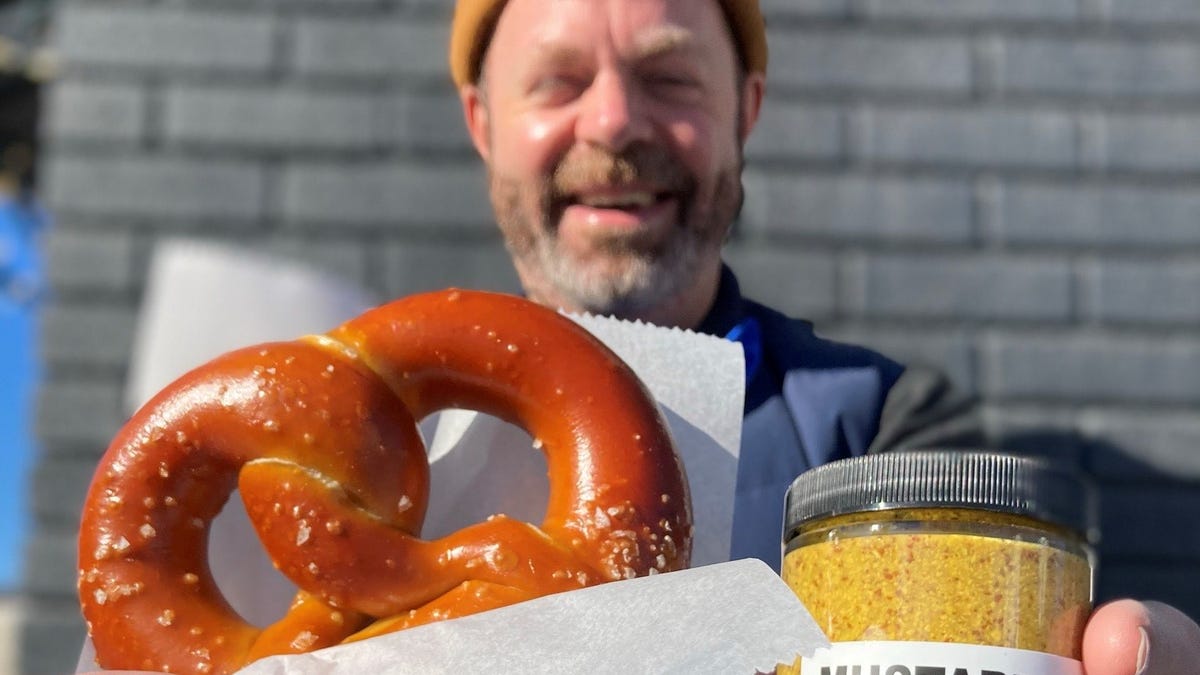LATEST FINANCIAL NEWS
Cities have permanently lost 400,000 jobs during COVID-19 pandemic as many shift to suburbs
Paul Davidson
| USA TODAY
COVID-19: Who is unemployed? The unemployment rate explainedJob loss numbers skyrocketed during the COVID-19 pandemic, but not everyone was counted as unemployed. Here’s how the unemployment rate is measured.Just the FAQs, USA TODAYOlly Smith worked as a restaurant consultant in New York City when the COVID-19 pandemic struck in March. He left his Manhattan apartment and worked remotely from his weekend house in Hillsdale, New York, quickly tiring of Zoom meetings.But when his boss said he had to return to the office in July, “it didn’t feel safe,” he says. “I was not excited.”So Smith, 41, quit and decided to pursue a longstanding dream by opening a gourmet food shop in nearby Millerton, New York, hiring two employees.Although he’s earning about one-third of his former salary, “I don’t really care,” he says. Noting the job generates far less stress, he adds, “I like being my own boss.”Save better, spend better: We’ll tell you how and send money tips, advice right to your inbox. Sign up hereIt’s not just people who are fleeing cities for suburbs during the pandemic.So are jobs.The pandemic has wiped out about 400,000 jobs in large urban areas, with about 175,000 of the positions shifting to the suburbs and smaller cities, according to estimates by payroll processor Gusto based on an analysis of the 100,000 or so small businesses it serves that was provided exclusively to USA TODAY.A suburban recovery“The recovery so far has been almost entirely concentrated in suburban areas,” says Gusto economist Luke Pardue. “The urban areas have been hit harder.”Many Americans have moved – temporarily or permanently – from big cities to less densely populated suburban and rural areas during the outbreak, largely to reduce the risk of contagion. But many of those new suburb-dwellers could well be working from home for companies still based in the city. The Gusto data suggests the pandemic may be dealing a bigger blow to the vibrancy of America’s urban centers by destroying the office and restaurant jobs that have served as their lifeblood.”When people move out of cities and work remotely from suburbs, economic activity shifts along with them,” Pardue said.Overall, the U.S. has recovered 12.5 million, or 56%, of the 22.4 million jobs shed last spring, when states shut down restaurants, malls and other businesses, and professional service firms cut positions as they reeled from the ripple effects, Labor Department figures show. Many of those workers were furloughed and have been rehired, while others have been permanently laid off.In fact, the recovery from the coronavirus recession is still a work in progress. Many of the jobs eradicated in cities are likely to come back after vaccines become widely available, life largely returns to normal, and restaurants and shops reopen or ramp up operations. Gusto, however, removes a job from its payroll tally only if a small business permanently eliminates it, indicating some of the job losses in cities could be long-lasting. By that measure, staffing totals for its small business clients in suburbs and smaller cities grew 9.1% from early March through December, similar to the year before, while employment in larger cities increased just 4.7%. The mental cost of a layoff: ‘I’m literally breaking inside’: As COVID-19 leaves millions jobless and struggling, the mental health toll risesBy contrast, each year from 2017 to 2019, small-business employment growth in larger cities significantly outstripped gains in suburbs, according to the Gusto figures.Black, Latino workers hurt mostAcross the economy, Gusto estimates that employment in big cities rose by about 400,000 fewer jobs than it would have from March through December if not for the pandemic, based on an analysis of its own and Labor Department figures. About 175,000 of those jobs have shifted to the suburbs – through companies moving or stepping up hiring in those areas – while 225,000 have been permanently lost, the firm reckons.After job loss, some in NYC turn to can collectingChicago Crosby is one of thousands of New Yorkers who make their living collecting cans and bottles. If residents are ordered to shelter in place to stop coronavirus spread, it could threaten the livelihood of some of the city’s poorest. (March 17)APIt’s no secret what’s driving the trend. Cities have suffered more COVID-19 cases than suburbs because of their higher population densities. As a result, city governments have imposed tougher social distancing restrictions and Americans have voluntarily avoided crowded urban areas, hurting economic activity. In recent months, people in cities have spent about 5% less time outside the home than those in suburbs, according to Gusto’s analysis of Google Mobility data.The change has disproportionately hurt Black and Latino workers, who are more likely to live in urban areas, the study says. It recommends that Congress channel more federal aid to small businesses in larger cities.Pardue notes that its small business customers skew slightly more heavily to professional service firms, especially tech companies, but largely reflect the overall labor market.Tax guide: Working from home during COVID-19? Here’s what that means for your tax returnsWith most white-collar employees working from home, many restaurants, shops and barbers in central business districts have closed, downsized or moved to more sparsely populated areas with fewer COVID-19 restrictions. Yet even job growth at finance, professional service and consulting firms fell sharply in urban areas last year, the Gusto data shows, while gains in those industries accelerated in the suburbs.Some companies may have moved their offices to outlying areas for more space amid the outbreak, Pardue says. Others relocated as their employees and other urban residents left the city. And some suburban restaurants, shops and law firms stepped up hiring as activity in the surrounding area picked up, while their urban counterparts pulled back hiring.’The virus wasn’t going anywhere’Smith, the Hillsdale, New York, resident, says several things fell into place to clear the way for his gourmet food shop, called Westerlind Pantry. A low-rent space was available in a former department store. Millerton has no grocery stores and just one convenience store. And the area has seen an influx of New Yorkers who are working remotely and moved there temporarily or permanently, as well as retirees.“I see customers just desperate to spend money,” he says, noting he eventually may open several businesses.Smith says he “enjoyed the city life and all it offers” and sometimes “misses being in a bustling bar.” But he’s grateful for the safer, open spaces and 10-minute commute to work in Hillsdale.“It just made me question the kind of life I wanted,” he says. “The virus wasn’t going anywhere … and the impact on the fast-casual (restaurant) industry was going to be seismic. I thought, ‘I can use my skills here.’”A recent Federal Reserve study of credit records, which list current addresses, found that the net migration of people from urban to suburban neighborhoods averaged 56,000 a month after the pandemic’s onset in March, double the rate from 2017 to 2019. About two-thirds of the increase was the result of fewer people moving to urban areas, while about one-third stemmed from residents leaving, according to the study by the Federal Reserve Bank of Cleveland.Migration was greater in areas that had more deaths from COVID-19, more people working from home and fewer small businesses that remained open, the study found. Americans are also heading to suburban and rural areas for bigger living spaces as they spend more time at home.Millennials raising families in suburbsThe rising fortunes of America’s suburbs during the crisis have intensified longer-term demographic trends. Millennials moved to cities in droves in the 2000s. But many are now in their mid-30s and leaving for the suburbs as they marry and have children, according to real estate consulting firm RCLCO.“Where cities were the center of gravity for the economy for as long as we can remember – we’ve lost that over the last year,” says economist Adam Kamins of Moody’s Analytics, who studies regional economies.But he says much of that could be recovered. As vaccinations spread and the pandemic eases, Americans, especially young professionals, will likely return to living and working in cities for the cultural amenities and nightlife, especially with an anticipated decline in housing prices in some urban districts, Kamins says.Restaurants previously limited to takeout service will step up hiring while new eateries replace those that have closed. And firms that laid off receptionists and administrative assistants as employees worked remotely will bring on support staff as workers trickle back to the office, at least some of the time.“When cities begin to recover more meaningfully,” Kamins says, “people will begin to come back.”
Source link









